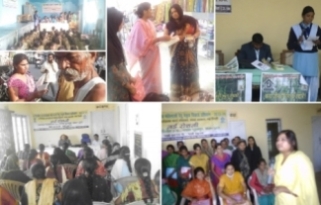SEVAK
Samaj Kalyan Evam Vikas Adhyayan Kendra
Advocacy
Dalit Muslims are a part of society, which is completely absent from the Constitution, parliamentary democracy and the debates of mainstream politics. The census report usually records the number count of the different castes included as Dalit and a brief outline on their present status. But in these reports, we find not even a trace of the population of Dalit Muslims. The deeply disturbing fact however is that the public sphere of our society doesn’t even deem it necessary to hold discussions on this group.
Forming almost a fifth of the Indian population, the Dalits or the Scheduled Castes, a conglomeration of numerous caste groups considered as untouchable, by caste Hindus, are victims of the most sternly hierarchical social order that human beings have ever devised. Since the social and economic oppression of the Dalits has been so closely intertwined with the Hindu religion, over the centuries many Dalits have sought to escape from the shackles of the caste system by converting to other religions. Consequently, a considerable majority of India's Muslims, Buddhists, Christians and Sikhs today consist of descendants of Dalit and other 'low' caste converts.
Recent decades have witnessed a remarkable upsurge in radical Dalit assertiveness. This resurgence of Dalit consciousness has not been limited to those defined according to the law as Scheduled Castes, though. Rather, the Dalit struggle for human rights has had a profound impact on other communities as well, particularly Christians and Muslims.
Most Indian Muslims are descendants of ' untouchable and 'low' caste converts, with only a small minority tracing their origins to Arab, Iranian and Central Asian settlers and invaders. Although the Quran is fiercely egalitarian in its social ethics, Indian Muslim society is characterised by numerous caste-like features, consisting of several caste-like groups. Muslims who claim foreign descent claim a superior status for themselves as ashraf or 'noble'. Descendants of indigenous converts are, on the other hand, commonly referred to contemptuously as ajlaf or 'base' or 'lowly'. As among the Hindus, the various jatis among the ajlaf Muslims maintain a strong sense of jati identity.
The emergence of democratic politics has drawn attention of the Central Government. The central cabinet in its meeting on June 22, 2006, approved Dr. Manmohan Singh’s new 15 point programme for minority welfare, including ways to prevent communal riots. In a comprehensive proposal the prime minister has asked for introduction of ways to enhance the living conditions, and allocation of 15 per cent of funds from welfare budget for minorities.
Currently Sachchar committee is in the process of finalising its report about the status of Muslim minorities in India. Whatever one could glean from the parts of report the current socio economic status of Muslim minorities in particular, has slipped down in the human development indices. Also their abysmal representation in jobs, the more of them living below poverty line and more of them being illiterate, leaves no doubt in one’s mind that without serious affirmative action, this community will go on being deprived more and more. The additional problem of post communal violence ghettotisation is adding salt to the wounds.
SEVAK is working for the rights of Dalit Muslims for long. It has carried out social, economic, cultural and educational survey of Dalit Muslims to include them under Article 341 of the Constitution of India. It has raised their issues at various forums and made representation to the Sachchar Committee.
